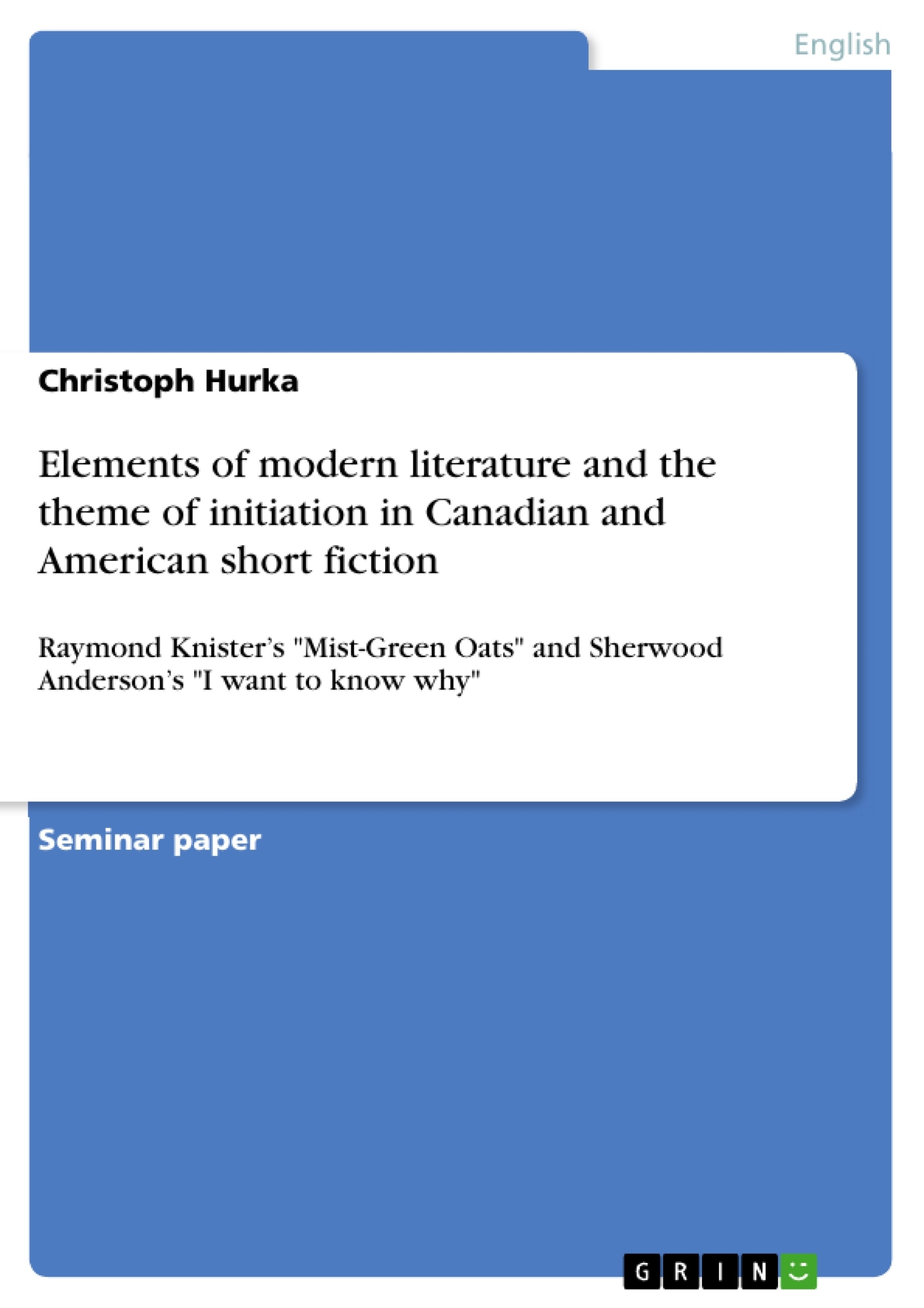Eine vergleichende Analyse von jeweils einer Kurzgeschichte der Autoren Raymond Knister (Kanada) und Sherwood Anderson (USA) hinsichtlich ihrer Zugehörigkeit zum Komplex der 'modernen' nordamerikanischen Literatur unter besonderer Berücksichtigung des Initiations-Motivs.
Table of Contents
- Raymond Knister and Sherwood Anderson are important representatives of the modernist literary movement in North America during the first half of the 20th century
- Raymond Knister and the modernist Canadian short story
- Sherwood Anderson and the American short story
- Raymond Knister: Mist-Green Oats (1922)
- Analysis of Mist-Green Oats
Objectives and Key Themes
This essay examines the contributions of Raymond Knister and Sherwood Anderson to the modernist literary movement in North America. It analyzes their short fiction, highlighting elements of modernism within the context of their respective national backgrounds. The essay explores how the stories contribute to the development of the modernist short story as a distinct genre.
- The emergence of the modernist short story in Canada and the United States
- The role of initiation stories in modernist short fiction
- The influence of rural settings and personal experiences on modernist writers
- The use of “objective correlative” as a technique for conveying emotion in literature
- The exploration of themes of alienation, disillusionment, and the conflict between rural and urban life
Chapter Summaries
The essay begins by establishing the context of modernist literature in North America, highlighting the contributions of Raymond Knister and Sherwood Anderson. The author delves into Knister's role in establishing the Canadian short story as a distinct genre and examines his use of rural settings and subjective depictions of inner struggles in his works. The essay then explores Anderson's influence on the American short story, emphasizing his rejection of traditional plot structures and his focus on the complexities of modern life, particularly in small-town America. The essay concludes with an analysis of Knister's short story “Mist-Green Oats,” examining its narrative techniques, themes, and its significance as a representation of the modernist short story.
Keywords
This essay focuses on key aspects of the modernist literary movement in North America, including the development of the short story genre, the use of rural settings, the exploration of themes of alienation and disillusionment, and the impact of personal experience on literary expression. The essay also highlights the significance of the concept of "objective correlative" in modernist literature.
- Quote paper
- Christoph Hurka (Author), 2011, Elements of modern literature and the theme of initiation in Canadian and American short fiction , Munich, GRIN Verlag, https://www.grin.com/document/197996



